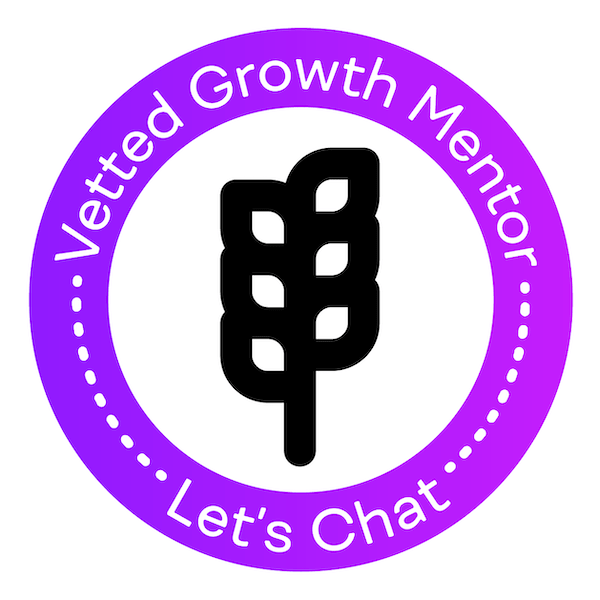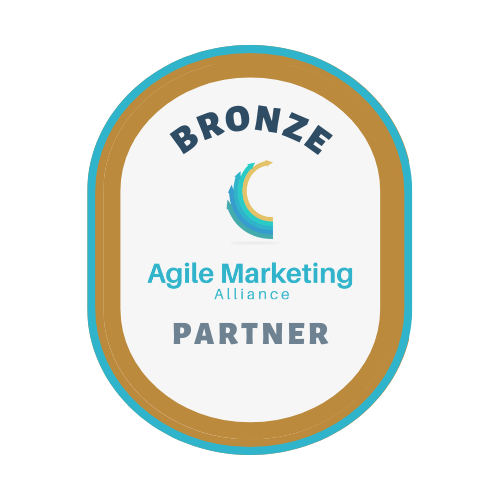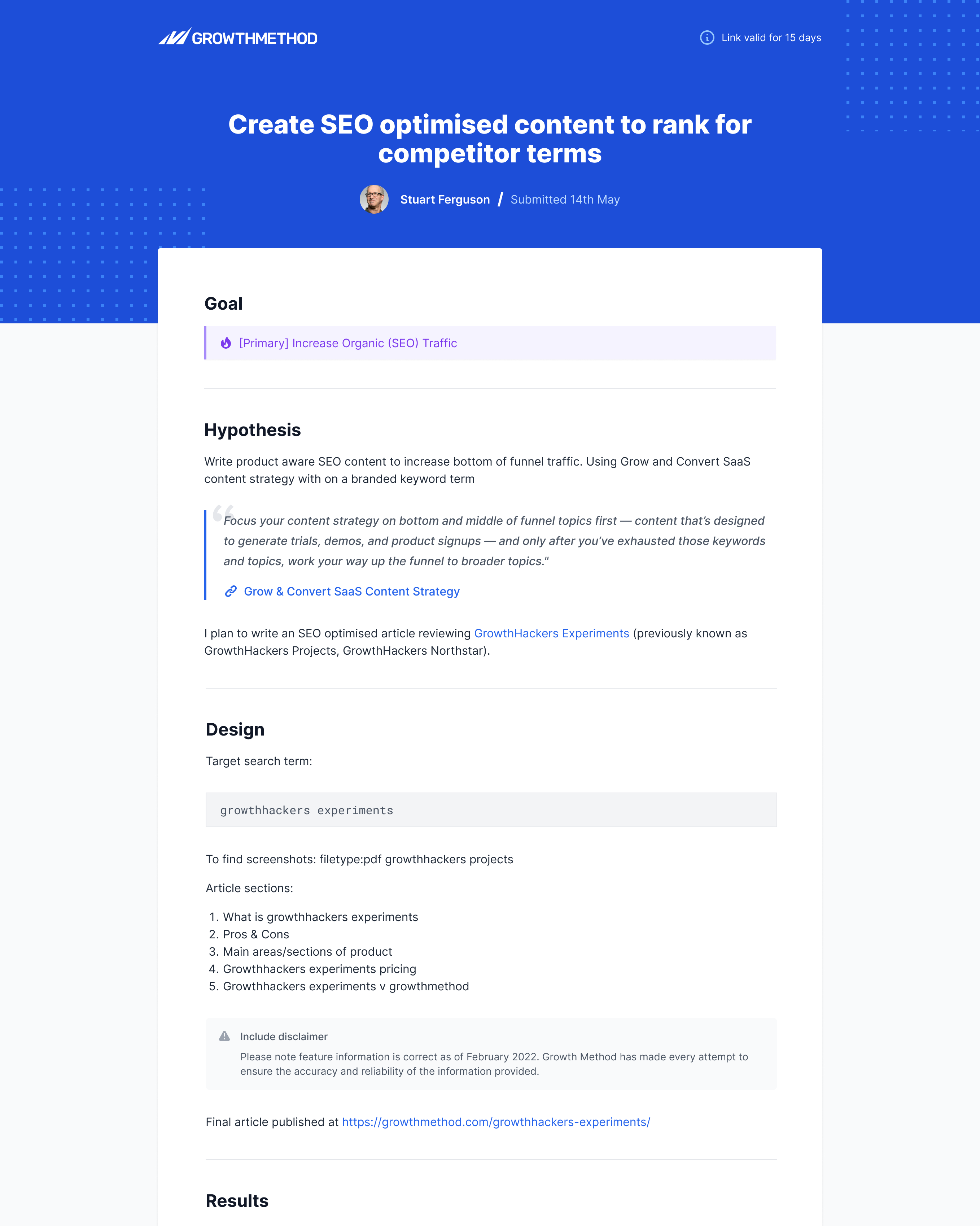Home / Agile Marketing /
What is agile marketing? Why modern marketing teams use agile.
Article originally published in March 2023 by Stuart Brameld. Most recent update in February 2024.
Request a demo
Project management for growth and agile marketing professionals. Map your acquisition funnel, integrate analytics and run agile experiments.
Experiment results
Recent experiments results include competitor SEO, AI-driven content, exit-intent modals and AB testing homepage headlines.
Case study
"We are on-track to deliver a 43% increase in inbound leads this year. There is no doubt the adoption of Growth Method is the primary driver behind these results."
![]()
Certified
We are vetted mentors with Growth Mentor and a partner with the Agile Marketing Alliance.
“We’re agile”.
A phrase heard in many marketing teams, however dig below the surface and, in our experience, marketing operations are rarely truly agile. According to the 2022 5th Annual State of Agile Marketing Report 97% of marketers have successfully implemented Agile within their organisation.
However, signing-up for Trello, configuring the Kanban board view and creating columns for In Progress, Up Next and Someday tasks doesn’t make you an agile team.
Conducting your meetings with everyone standing up doesn’t either.
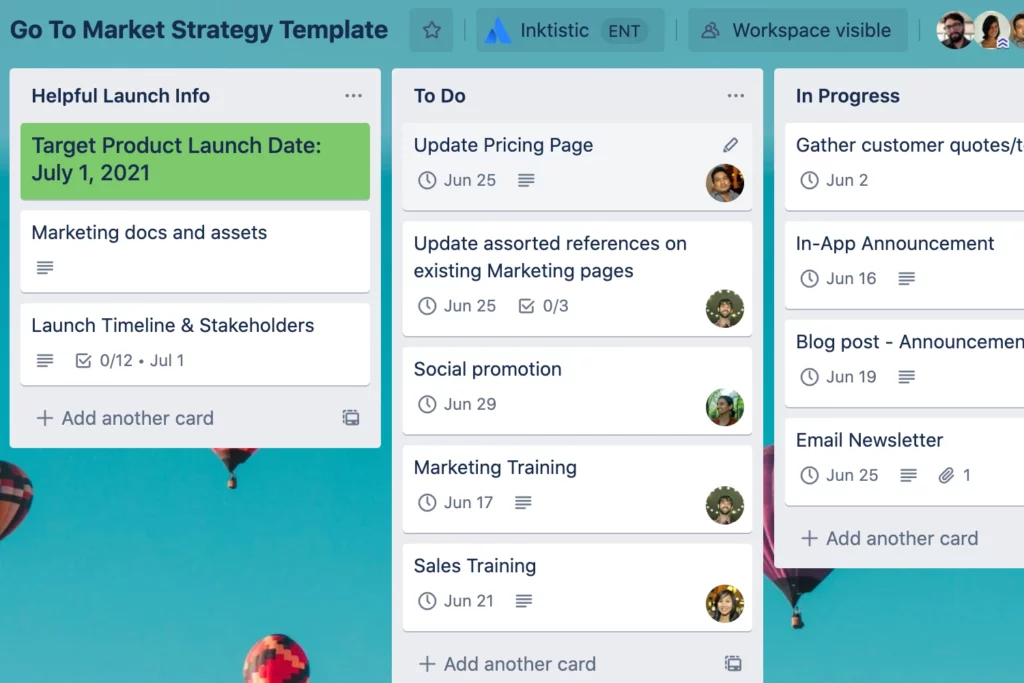
The lack of proper agile implementations has led to an entire set of terminology to describe improper agile implementations, including fake agile, faux agile, dark agile and agile theatre.
What is Agile?
It was in Snowbird, Utah, around 25 miles outside Salt Lake City, at a mountain ski resort that a group of 17 software development practitioners gathered in 2001 to define The Agile Manifesto. Little did they know the result would change the world of software development, as well as many other business functions.
Agile prioritises self-organising teams, experimentation and welcomes change, though agile is arguably best known today for its iterative approach to work and projects.
The Agile Manifesto includes 4 values and 12 principles, the group came up with the following as a definition:
We are uncovering better ways of developing software by doing it and helping others do it. Through this work we have come to value:
- Individuals and interactions over processes and tools
- Working software over comprehensive documentation
- Customer collaboration over contract negotiation
- Responding to change over following a plan
That is, while there is value in the items on the right, we value the items on the left more.
Agile Manifesto
The 12 principles of the agile manifesto are as follows:
- Our highest priority is to satisfy the customer through early and continuous delivery of valuable software.
- Welcome changing requirements, even late in development. Agile processes harness change for the customer’s competitive advantage.
- Deliver working software frequently, from a couple of weeks to a couple of months, with a preference to the shorter timescale.
- Business people and developers must work together daily throughout the project.
- Build projects around motivated individuals. Give them the environment and support they need, and trust them to get the job done.
- The most efficient and effective method of conveying information to and within a development team is face-to-face conversation.
- Working software is the primary measure of progress.
- Agile processes promote sustainable development. The sponsors, developers, and users should be able to maintain a constant pace indefinitely.
- Continuous attention to technical excellence and good design enhances agility.
- Simplicity–the art of maximizing the amount of work not done–is essential.
- The best architectures, requirements, and designs emerge from self-organising teams.
- At regular intervals, the team reflects on how to become more effective, then tunes and adjusts its behavior accordingly.
At the time when nearly all teams were using waterfall processes and systems, it was considered a progressive approach to running software development projects.
What is agile marketing?
Agile Marketing takes many of the original values and principles from agile software development and applies them to the world of marketing. It is a way for marketing teams to work in a way that delivers greater results to the business.
Watch the video below from Jim Ewel provides an excellent overview where he describes agile markeing as an operating system for marketing.
There are many principles and best practises when it comes to using agile for marketing, but to keep things simple, we believe the two that are cited most often and that result in the biggest impact for marketing teams are:
- Speed – releasing work in small increments rather than big upfront bets (we have previously written about testing velocity). Large projects are broken down into chunks of work known as sprints.
- Customer focus – continually gathering customer feedback and always delivering work with the customer in mind (rather than delivering to a pre-conceived plan).
Others have described agile as a mindset.
The Agile Marketing Manifesto
In June of 2012 the first conference for agile marketers was held in San Francisco. The conference, called SprintZero, gathered 35 agile marketing practitioners with the goal of developing a manifesto agile for marketing (following the precedent of the famous 2001 agile manifesto detailed above).

The Agile Marketing Manifesto was centres around 5 core values as follows:
To keep up with the speed and complexity of marketing today, we are adopting new ways of working:
https://agilemarketingmanifesto.org/
- Focusing on customer value and business outcomes over activity and outputs
- Delivering value early and often over waiting for perfection
- Learning through experiments and data over opinions and conventions
- Cross-functional collaboration over silos and hierarchies
- Responding to change over following a static plan
The agile marketing process
Whilst there are a number of different approaches to agile marketing the principles remain similar and requires little upfront strategy.
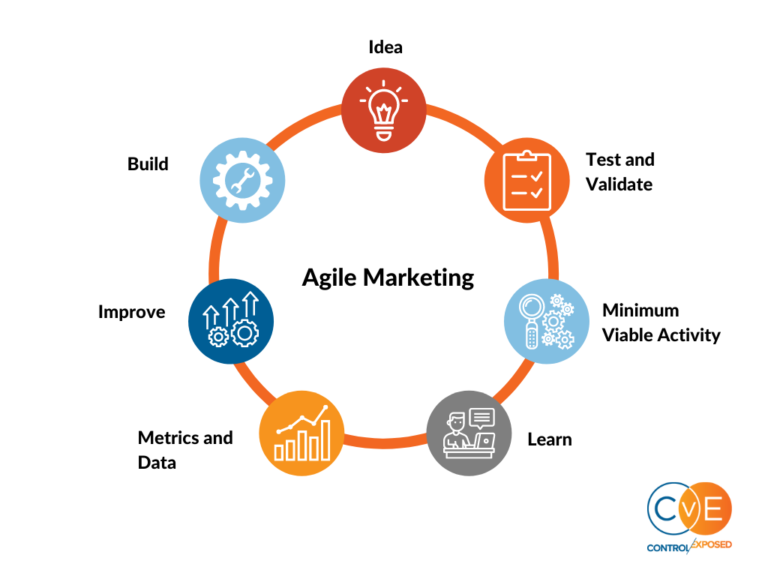
Agile marketers focus on building and running tests to validate ideas, learning from those tests through insight and data, and continuing to iterate and improve over time. This can result in many improvements to key metrics (such as daily or weekly conversions) in the same time that it takes to run a single big bang marketing campaign which may not deliver the desired outcome.
Ultimately the goal is the test and learn fast, in order to reduce the likelihood of spending time and money on activity that doesn’t produce the desired results.
Why use agile marketing?
The main benefits of using agile in marketing teams is to increase productivity of marketing teams and increase overall marketing effectiveness and business impact. Research by McKinsey found that digital marketing teams using agile have seen a 20 to 40% increase in revenue.
In the 5th State of Agile Marketing report published by AgileSherpas in 2022, which surveyed 513 marketers worldwide, respondents identified the ability to better manage changing priorities and better visibility into project status as the top benefits to an agile approach. Sprint planning, reviews and transparency enables better communication with business units and stakeholders.
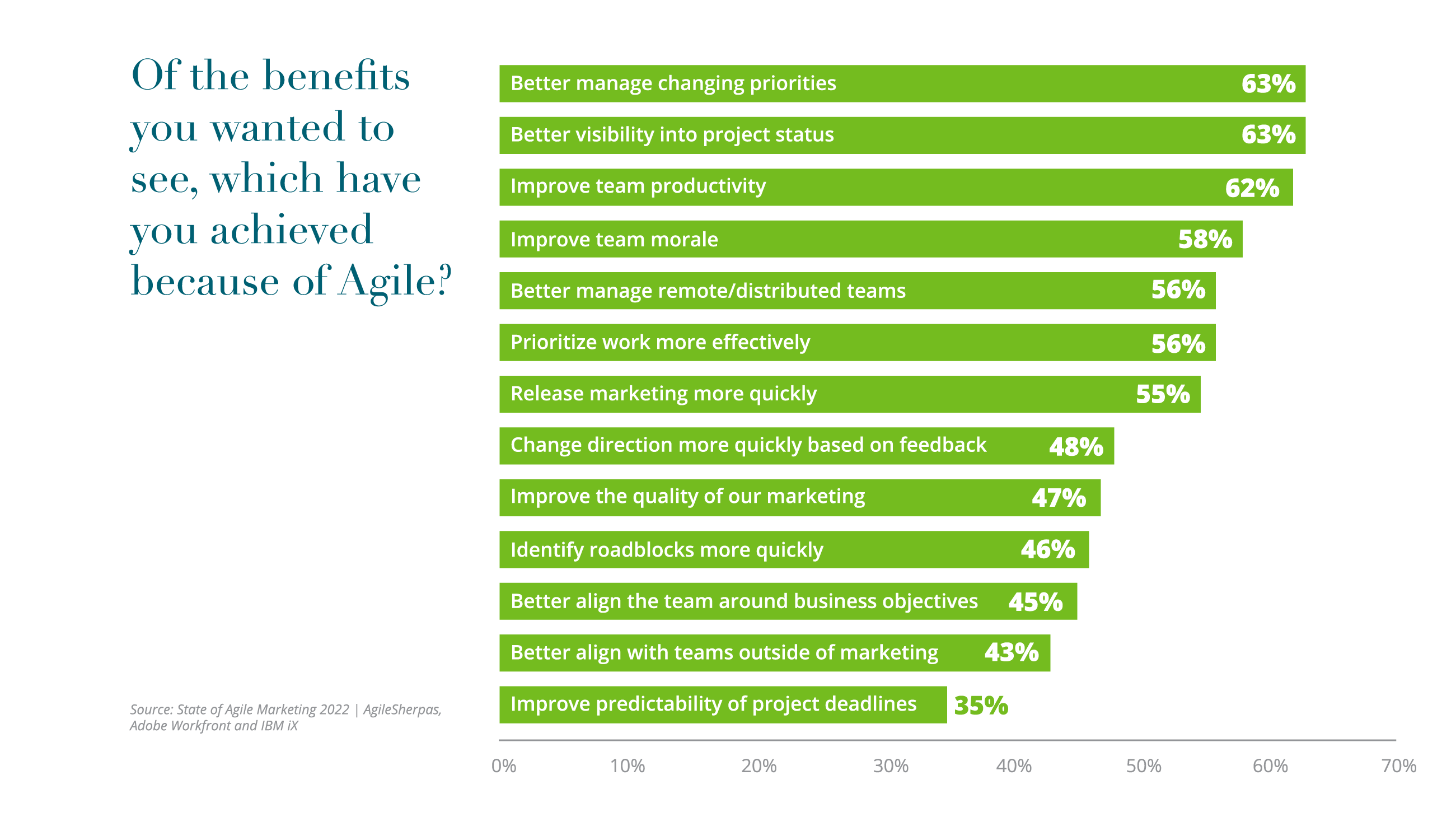
For more benefits of using agile, see our comparison table below.
Agile marketing methodology
| Methodology | Advantages | Disadvantages |
|---|---|---|
| Kanban Marketing | 1. Enhances workflow visibility and team collaboration. 2. Adaptable to changes in marketing priorities. 3. Focuses on continuous delivery and efficiency. | 1. Potential overemphasis on current tasks over long-term strategy. 2. Requires discipline to update the Kanban board. 3. May not suit teams needing rigid structure. |
| Scrumban Marketing | 1. Merges the structure of Scrum with Kanban’s flexibility. 2. Ideal for projects needing frequent reprioritisation. 3. Supports continuous improvement and adaptability. | 1. Blending two methodologies can be confusing. 2. Needs strong leadership to maintain balance. 3. Challenging for teams new to agile practices. |
| Lean Marketing | 1. Maximises customer value with fewer resources. 2. Encourages rapid experimentation and learning. 3. Identifies and eliminates waste in processes. | 1. May require a significant shift in culture and mindset. 2. Initial setup can be time-consuming. 3. Risk of prioritising efficiency over creativity. |
| Scrum Marketing | 1. Promotes rapid iterations and feedback loops. 2. Enhances team accountability and clarity of roles. 3. Structured approach simplifies complex project management. | 1. Can be inflexible, less adaptable to market changes. 2. Scrum sprints may not align with all marketing projects. 3. Demands full team commitment to Scrum principles. |
Agile marketing v traditional (waterfall) marketing
We’ve provided the table below to highlight some of the differences between traditional (waterfall) marketing approches and more modern (agile) teams.
| Traditional Marketing (Waterfall) | Modern Marketing (Agile) |
|---|---|
| Rigid, follow a fixed plan | Flexible and responsive to change |
| Big-bang campaigns | Rapid iterations |
| Long time to market, lots of planning | Faster time to market, little planning |
| Opinions, conventions and politics | Testing, data and prioritisation |
| A few large bets | Many small experiments |
| One size fits all | Individuals and interactions |
| Silos and hierarchy | Collaboration |
| Focused on internal needs | Focused on customer needs |
| Little customer feedback | Frequent customer feedback |
| Output focused | Outcome focused |
| Lots of waste and rework | Minimised waste |
| Command and control | Self-organising teams |
Final thoughts
At Growth Method we have implemented our agile marketing platform with a wide range of companies, from solo-founders to multi-national corporations. Here are some of what we have discovered along the way:
- In a fast-paced world of b2b business sprints just make more sense. In a world where jet fighters are built using agile principles, marketing has little excuse.
- Many marketing teams are too busy delivering on outputs to find the real opportunities that will deliver outcomes.
- The more sprints you run, the more you’ll learn, and the more data you will have to store and communicate within your company.
- It is easy to be flexible and agile as a small team, but things get exponential harder as teams and companies grow.
- A huge percentage of work that is delivered in traditional marketing teams is waste. In our experience, 50% or more of a teams outputs have *no impact* on the business.
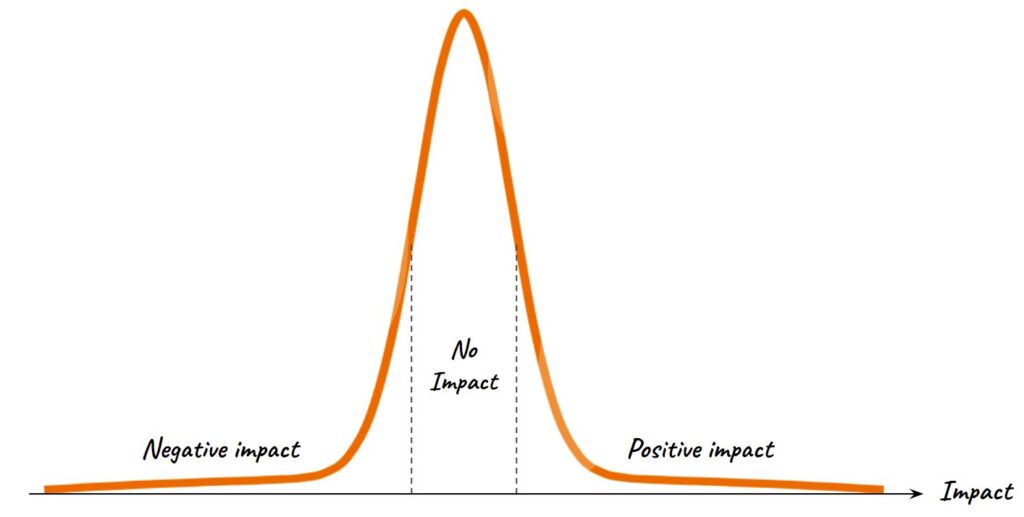
I’ll leave you with a quote that I often use with marketing teams that are new to the agile methodology:
Gall’s Law states that all complex systems that work evolved from simpler systems that worked. If you want to build a complex system that works, build a simpler system first, and then improve it over time.
Wikipedia
Got questions? Ping me on LinkedIn or on Twitter.
Resources
Recommended additional reading and resources on agile and agile in marketing:
Other articles you might like
Here are some related articles and further reading you may find helpful.
